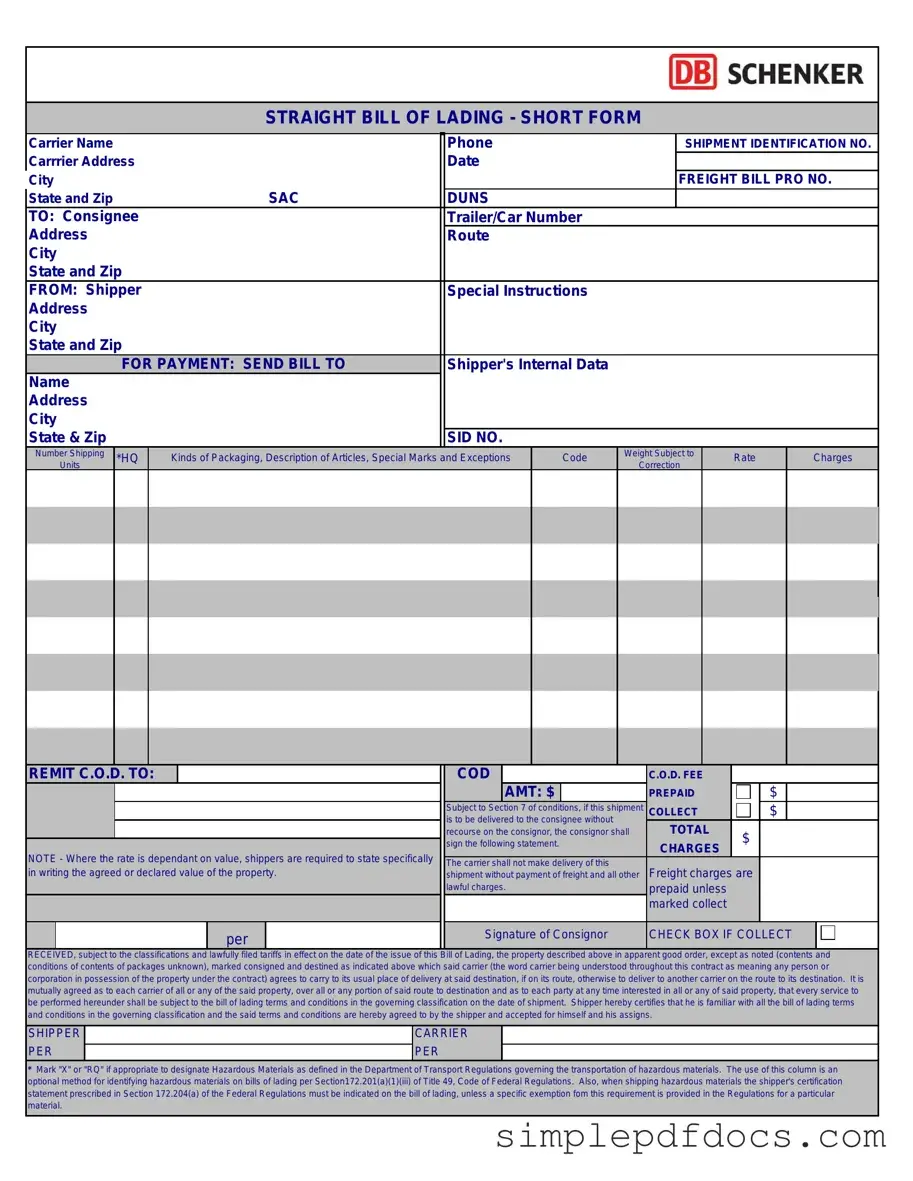The Straight Bill of Lading is a crucial document in the shipping and freight industry, serving as a receipt for goods and a contract between the shipper and the carrier. This form is typically non-negotiable, meaning that it is issued to a specific consignee and cannot be transferred to another party. The Straight Bill of Lading outlines essential details, including the names and addresses of the shipper and consignee, a description of the goods being transported, and any special handling instructions. It also specifies the terms of the shipment, such as payment obligations and delivery conditions. Importantly, this document plays a vital role in ensuring that goods are delivered correctly and that the rights and responsibilities of all parties involved are clearly defined. Understanding the Straight Bill of Lading is essential for anyone engaged in the logistics and transportation sectors, as it helps facilitate smooth transactions and minimize disputes related to the shipment of goods.
